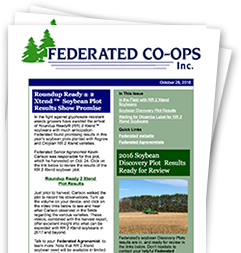Start Fighting Next Year’s White Mold Now

“You can significantly reduce the incidence of white mold and significantly reduce the impact on yield with soil applied biological fungicides applied in the fall,” said Kevin Carlson, Federated’s senior agronomist.
Resting spores of Sclerotinia white mold are in the soil, and they won’t simply go away with winter frost. This is a difficult disease to understand, in some ways, according to Carlson. “It’s a fungus that significantly impacts soybean crops in our area, in our environment.”
Managing white mold is challenging, but not impossible, with the right tools, including:
- row spacing,
- proper plant population,
- using soybean varieties with a tolerance to white mold,
- applying fungicides – both soil-applied (in the fall or spring) and foliar-applied (at flowering).
“Contans® WG fungicide is a powerful tool to reduce the incidence of white mold,” said Carlson. It’s one of the many tools, as noted above, and “if a grower has significant impact on yield from white mold, using Contans in addition to other products [and management tools] can help maintain yields.” (See Contans WG Fact Sheet .)
Contans can be sprayed on entire fields or, if growers have an historical record of white mold or combine data that shows where the problems lie, Contans can be spot sprayed once the crop comes off. (See additional info onScouting for White Mold.)
If the problem is severe, Federated recommends a Contans use rate of 2 lbs./ac., but most applications are 1-1½ lbs./ac.
“We’ve been using Contans in our area for a number of years, and it works,” said Carlson. “It’s an investment in the crop for the future,” spraying a soil-applied fungicide in the fall, “but it works,” he said.
Talk to your Federated Agronomist about how Contans can fit into a comprehensive white mold management plan. (See Contans WG FAQs.)


